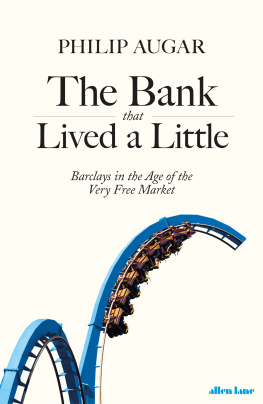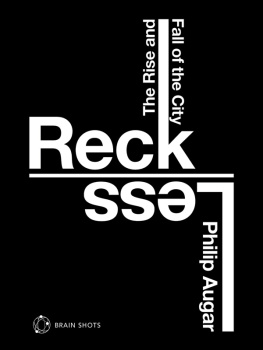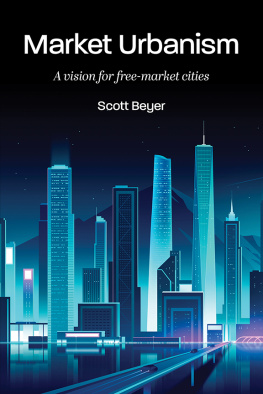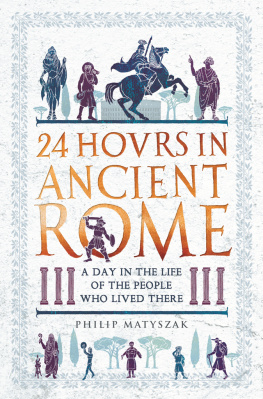Philip Augar - The Bank That Lived a Little: Barclays in the Age of the Very Free Market
Here you can read online Philip Augar - The Bank That Lived a Little: Barclays in the Age of the Very Free Market full text of the book (entire story) in english for free. Download pdf and epub, get meaning, cover and reviews about this ebook. year: 2018, genre: Science. Description of the work, (preface) as well as reviews are available. Best literature library LitArk.com created for fans of good reading and offers a wide selection of genres:
Romance novel
Science fiction
Adventure
Detective
Science
History
Home and family
Prose
Art
Politics
Computer
Non-fiction
Religion
Business
Children
Humor
Choose a favorite category and find really read worthwhile books. Enjoy immersion in the world of imagination, feel the emotions of the characters or learn something new for yourself, make an fascinating discovery.
- Book:The Bank That Lived a Little: Barclays in the Age of the Very Free Market
- Author:
- Genre:
- Year:2018
- Rating:4 / 5
- Favourites:Add to favourites
- Your mark:
- 80
- 1
- 2
- 3
- 4
- 5
The Bank That Lived a Little: Barclays in the Age of the Very Free Market: summary, description and annotation
We offer to read an annotation, description, summary or preface (depends on what the author of the book "The Bank That Lived a Little: Barclays in the Age of the Very Free Market" wrote himself). If you haven't found the necessary information about the book — write in the comments, we will try to find it.
Philip Augar: author's other books
Who wrote The Bank That Lived a Little: Barclays in the Age of the Very Free Market? Find out the surname, the name of the author of the book and a list of all author's works by series.
The Bank That Lived a Little: Barclays in the Age of the Very Free Market — read online for free the complete book (whole text) full work
Below is the text of the book, divided by pages. System saving the place of the last page read, allows you to conveniently read the book "The Bank That Lived a Little: Barclays in the Age of the Very Free Market" online for free, without having to search again every time where you left off. Put a bookmark, and you can go to the page where you finished reading at any time.
Font size:
Interval:
Bookmark:

UK | USA | Canada | Ireland | Australia
India | New Zealand | South Africa
Allen Lane is part of the Penguin Random House group of companies whose addresses can be found at global.penguinrandomhouse.com

First published 2018
Copyright Philip Augar, 2018
The moral right of the author has been asserted
Cover photograph Roc Canals Photography/Getty Images
ISBN: 978-0-241-33598-7
To my sources, with gratitude
and to my supporters, with love
)
. Lord Camoys (Rex Shutterstock)
. 54 Lombard Street, 1906 (Historic England)
. 54 Lombard Street, 1980s (Associated Newspapers/Rex Shutterstock)
. 54 Lombard Street, 2000 (John Sturrock/Alamy)
. 1 Churchill Place (Jacob Carter/Rex Shutterstock)
)
. Sir Timothy Bevan (The Times/News Licensing/Tim Bishop)
. John Quinton (Trevor Humphries/Rex Shuttestock)
. BZW Trading Floor (Mike Abrahams/Alamy)
. Harry Enfield as Loadsamoney (ITV/Rex Shutterstock)
. Andrew Buxton and Martin Taylor (UPP/TopFoto)
. Matthew Barrett and Sir Peter Middleton (Sean Dempsey/PA Images)
. New York Racquet and Tennis Club (BeyondMyKen/Wikimedia Commons)
. Bob Diamond playing golf (Getty Images)
. Carol Vorderman advertises FirstPlus (The Advertising Archives)
. John Varley and Rijkman Groenink (EPA/Rex Shutterstock)
. Gordon Brown on holiday (Darren Staples/PA Images)
. Lord Myners (Mark Harrison/Camera Press, London)
. Baroness Vadera (Charlie Bibby/Financial Times, 2016. Used under licence from the Financial Times. All rights reserved)
. Lehman Brothers before the Barclays takeover (Richard Levine/Alamy)
. After the Barclays takeover (Photoshot/TopFoto)
. Amanda Staveley ( Siddharth Siva)
. Roger Jenkins (Bloomberg/Getty Images)
. Front pages of the first and second editions of the Financial Times, 27 March 2009 (Used under licence from the Financial Times. All rights reserved)
. John Varley, Bob Diamond and Marcus Agius (ED/CVA/Vismedia/Camera Press, London)
. Alison Carnwarth (Micha Theiner/CityAM/Rex Shutterstock)
. Lord Turner (PA/TopFoto)
. Demonstration at Canary Wharf (Suzanne Plunkett/Reuters)
. Demonstration at Barclays AGM (Oli Scarff/Getty Images)
. Hector Sants, Paul Tucker and Baron King (Bloomberg/Getty Images)
. Rich Ricci (David Hartley/Rex Shutterstock)
. Jerry del Missier (Jane Mingay/Rex Shutterstock)
. Bob Diamond at the Treasury Committee (Gavin Rodgers/Rex Shutterstock)
. Sir David Walker (Leon Neal/AFP/Getty Images)
. Antony Jenkins (Simon Dawson/Bloomberg/Getty Images)
. Lucknam Park (VisitBritain/Getty Images)
. John McFarlane (Fairfax Media/Getty Images)
. Jes Staley (Tolga Akmen/AFP/Getty Images)
. Evening Standard advertisement (Authors own photograph)
. Lord Mandelson and Bob Diamond (Private collection)
It was in 1978, forty years ago this year that I started in the City: I spent twenty years working there and (so far) have spent twenty more writing about it. I was at the centre of the action as City institutions and people seized the commanding heights of the economy and then from a different vantage point I watched it all go wrong. I never meant it to be like this but a fascination with the City and what it stands for has become who I am.
I think of my forty working years as four distinct decades. When I began as a trainee investment analyst in the late 1970s (with aviator glasses, hair slightly too long and just one suit), stockbroking, which was mainly what the City did then, was thought to be a genteel pastime. To the person in the street, stockbrokers wore bowler hats and pinstripes, drank a bit too much and lived in big houses in Surrey. Not much of that was true, but it didnt really matter because the City was a quiet corner of national life and kept itself to itself.
That changed in my second decade, after the financial deregulation in 1986 known as Big Bang. Perceptions of the pink-cheeked, gin and tonic brigade were replaced by images of excitable young men in striped shirts and braces yelling into their phones as markets raged. It was good television, but away from the cameras something less visual and more dangerous was happening. Smart investment bankers were pulling the strings in corporate and institutional boardrooms and encouraging governments to let market forces rip. The culture of money and the marketplace took hold of national life and the City was in charge. I doubted it would have a happy ending so in 1999 I left, and instead started describing it in books and articles and on television and radio.
In my third decade, as I wrote my first books, markets were in their pomp. These were years of steady growth and low inflation and the liberated financial markets, created by Margaret Thatcher and John Major and sustained by Tony Blair and Gordon Brown, were credited with being responsible for the economic miracle. Bankers proclaimed that risk had been transformed and encouraged financial institutions, governments, businesses and households to load up with debt. The City of London became the worlds international financial services capital and was praised as a shining light for the UK economy.
That changed in 2008, the beginning of my fourth decade, with the banking crisis and the subsequent years of austerity. The poster child became a demon and popular discontent with the unequal distribution of wealth and opportunity was expressed in volatile and unexpected election results in the victim economies.
This book is the story of that rise and fall told through the fortunes of one institution, and I see it as a paradigm for what happened to banking, the City and the British economy during my working life. Barclays journey from an old Quaker bank to a full-throttle capitalist machine makes it a perfect example of my underlying theme but the truth is I stumbled upon it. I never worked there myself but spent a few years at its less grand rival NatWest. After I left the City, my interest in Barclays was piqued in 2000 by Martin Vander Weyers memoir Falling Eagle. As a writer and commentator I followed with let me simply say great interest, the banks frequent changes in strategy and chief executive. Then in 2013 at a dinner organized by the Centre for the Study of Financial Innovation, I fell into an argument with Bob Diamond, who had been deposed as Barclays chief executive the year before. We continued the discussion afterwards, which prompted me to explore how Barclays had got into such a mess. This book is the result.
A word on sources and methodology. I have dramatized events and reconstructed dialogue based on more than 400 hours of interviews with over one hundred people closely involved in the story described. Many have also shared material from their personal archives, including file notes, emails, internal presentations and contemporaneous notes of meetings. Most of those who spoke to me did so on condition that they could not be identified as a source. Out of deference to their wishes and to avoid giving undue emphasis to others, interviews are not individually referenced. Readers should not assume that I have spoken to everyone mentioned in the book, or that the persons whose words, thoughts, actions or feelings are described were necessarily the source of that information. In many cases they were, but sometimes other people present either in person or on the call or who were briefed afterwards provided me with information. Statements given to parliament, official reports, court records, memoirs, articles, other books and my personal experience as a practitioner, non-executive board member, adviser and writer have also been used to supplement interviews. Citations to written sources are given in the Notes at the end of the book.
Font size:
Interval:
Bookmark:
Similar books «The Bank That Lived a Little: Barclays in the Age of the Very Free Market»
Look at similar books to The Bank That Lived a Little: Barclays in the Age of the Very Free Market. We have selected literature similar in name and meaning in the hope of providing readers with more options to find new, interesting, not yet read works.
Discussion, reviews of the book The Bank That Lived a Little: Barclays in the Age of the Very Free Market and just readers' own opinions. Leave your comments, write what you think about the work, its meaning or the main characters. Specify what exactly you liked and what you didn't like, and why you think so.







